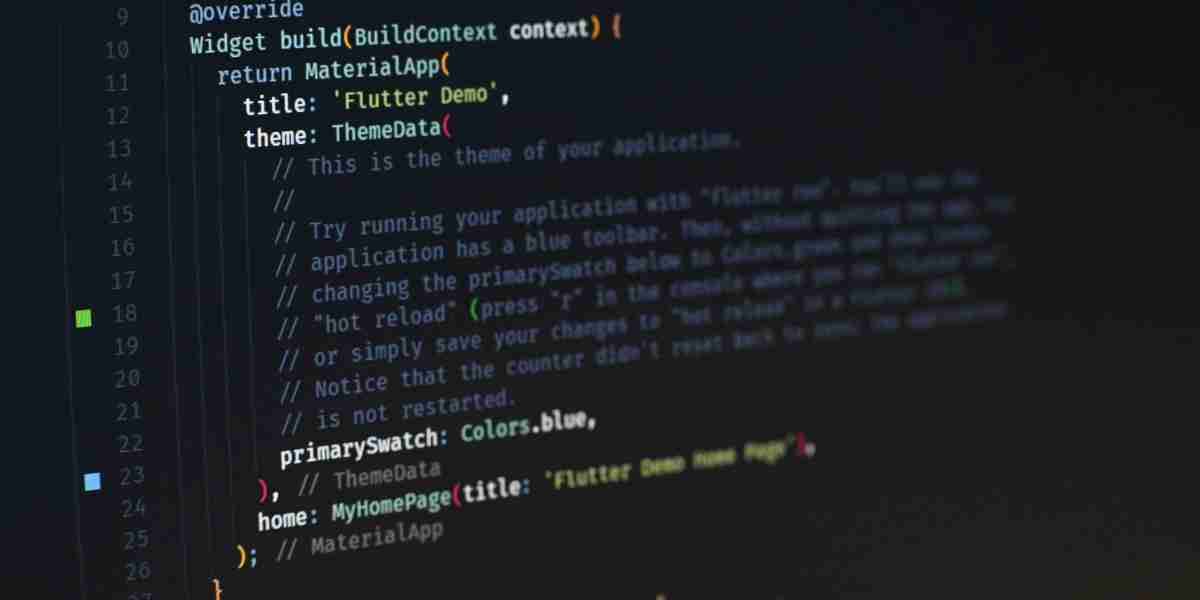Introduction
Flutter, developed by Google, has emerged as one of the leading frameworks for building cross-platform mobile applications. Its popularity stems from its ability to create beautiful, high-performance apps with a single codebase. If you're new to Flutter and eager to dive into mobile app development, you're in the right place. In this comprehensive guide, we'll take you through the fundamentals of Flutter and help you get started on your journey to becoming a proficient Flutter developer.
What is Flutter?
Flutter is an open-source UI software development kit created by Google. It allows developers to build natively compiled applications for mobile, web, and desktop from a single codebase. Flutter uses the Dart programming language, which is also developed by Google, and provides a rich set of pre-built widgets to create stunning user interfaces.
Setting Up Your Development Environment:
Before you can start building Flutter apps, you need to set up your development environment. Here's a step-by-step guide to get you started:
Install Flutter SDK: Begin by downloading the Flutter SDK from the official Flutter website (https://flutter.dev/). Follow the installation instructions provided for your operating system (Windows, macOS, or Linux).
Install Android Studio or Xcode: Depending on your target platform (Android or iOS), you'll need either Android Studio with the Flutter plugin or Xcode installed on your machine. These IDEs provide essential tools for developing and testing Flutter apps.
Set Up an Editor: Flutter supports various code editors, including Visual Studio Code, IntelliJ IDEA, and Android Studio. Choose your preferred editor and install the Flutter and Dart plugins to enhance your development experience.
Verify Installation: Once everything is set up, open a terminal or command prompt and run the
flutter doctorcommand. This command verifies your Flutter installation and identifies any missing dependencies that need to be installed.
Creating Your First Flutter App:
Now that your development environment is ready, let's create your first Flutter app:
Open Your IDE: Launch your chosen code editor and create a new Flutter project.
Write Your Code: Flutter apps are composed of widgets, which are building blocks for the user interface. Open the
lib/main.dartfile and replace the default code with a simple Flutter widget, such as aMaterialAppwith aScaffoldcontaining aTextwidget.Run Your App: Connect a device or start an emulator, then run your Flutter app using the
flutter runcommand in the terminal. This command compiles your code and installs the app on the connected device or emulator.View Your App: Once the app is running, you should see your Flutter app displayed on the screen of your device or emulator. Congratulations, you've successfully created and run your first Flutter app!
Learning Resources and Next Steps:
As you continue your journey with Flutter, there are plenty of resources available to help you learn and improve your skills:
Official Flutter Documentation: Explore the official Flutter documentation (https://flutter.dev/docs) for in-depth guides, tutorials, and API references.
Flutter YouTube Channel: Subscribe to the Flutter YouTube channel (https://www.youtube.com/flutterdev) for video tutorials, live streams, and updates from the Flutter team.
Online Courses and Tutorials: Enroll in online courses or follow tutorials on platforms like Udemy, Coursera, and freeCodeCamp to learn Flutter concepts and best practices.
Community Support: Join Flutter communities on platforms like Stack Overflow, Reddit, and Discord to ask questions, share knowledge, and connect with fellow developers.
Outsourcing Flutter App Development:
While learning to develop Flutter apps on your own can be rewarding, outsourcing Flutter app development to experienced professionals offers several benefits:
Access to Expertise: Outsourcing allows you to tap into the expertise of skilled Flutter developers who have experience in building a wide range of mobile applications. These professionals are well-versed in Flutter's best practices, design patterns, and performance optimization techniques, ensuring the delivery of high-quality apps.
Cost-Effectiveness: Hiring an in-house team of Flutter developers can be costly due to recruitment, training, and infrastructure expenses. Outsourcing Flutter app development to offshore or nearshore development teams often provides cost-effective solutions, as you only pay for the services rendered without the overhead costs associated with maintaining a dedicated team.
Faster Time to Market: Outsourcing Flutter app development can expedite the development process and shorten the time to market. Experienced development teams have established workflows, tools, and processes in place to efficiently build and deploy Flutter apps, allowing you to launch your product sooner and gain a competitive edge in the market.
Focus on Core Business Activities: By outsourcing Flutter app development, you can free up your internal resources to focus on core business activities such as strategy, marketing, and customer engagement. This allows you to allocate your time and resources more effectively, driving business growth and innovation.
Scalability and Flexibility: Outsourcing Flutter app development provides scalability and flexibility to adapt to changing project requirements and business needs. Development teams can easily scale up or down the resources allocated to your project based on demand, ensuring optimal resource utilization and project success.
Risk Mitigation: Outsourcing Flutter app development to reputable development firms reduces the risks associated with project execution, such as delays, budget overruns, and quality issues. These firms often have robust project management practices, quality assurance processes, and legal frameworks in place to mitigate risks and ensure project success.
Conclusion:
Getting started with Flutter is an exciting journey that opens up endless possibilities for building innovative mobile apps. By following this comprehensive guide, you've taken the first steps toward becoming a proficient Flutter developer. Keep experimenting, learning, and building, and soon you'll be creating polished Flutter apps that delight users across platforms.



